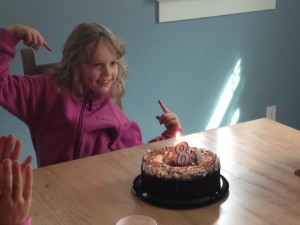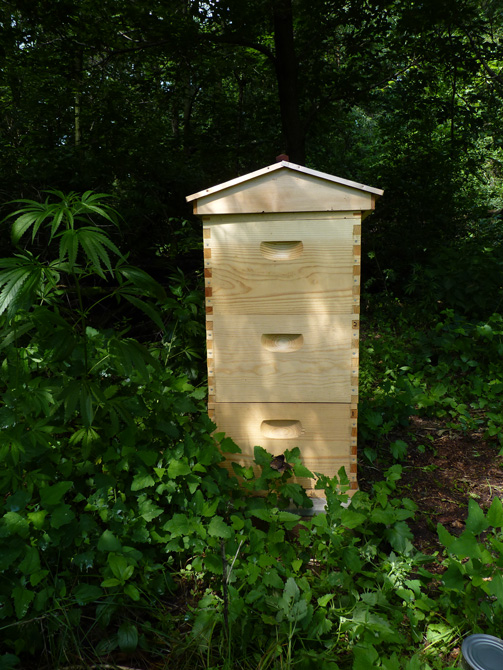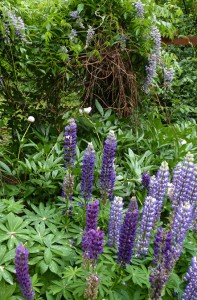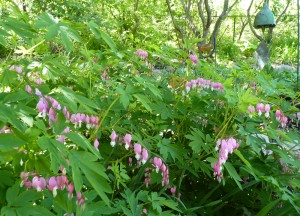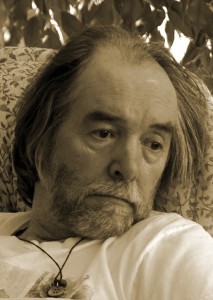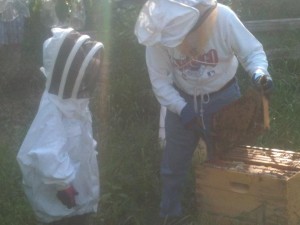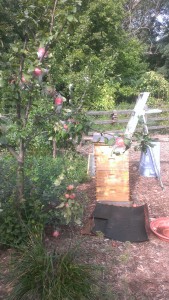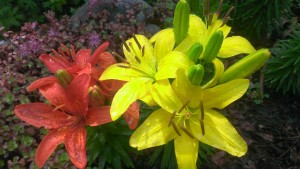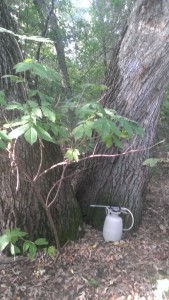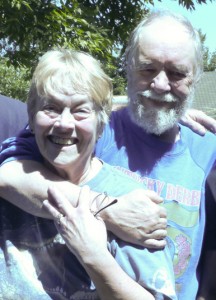Lughnasa College Moon
The Northrup King building in Northeast Minneapolis houses artists, floors and floors and floors of studios: potters, painters, metal workers, collage artists, sculptors, print makers. 5 years ago a docent group did an event there during Art-a-whirl. The room in which the event was held had remnants of the building’s original purpose. Slick concrete columns fat as oil drums flowered toward the top, supporting the weight of feed grains that would come into the top floor of the building, then get separated below through the chutes still visible in the large open area.
While the band played, memories of another time, in the late 1970’s swirled around. Back then Northrup King was still an independent seed company, selling seed to farmers. But in the mid-1970’s a specter stalked the seed industry. Large pharmaceutical companies had become aware of the great concentration of power available for those who controlled patents on seeds, on their genetic makeup. A huge buyup of seed companies was underway.
A group attempted to stop the buyout of Northrup King by Switzerland’s Sandoz corporation, but failed. Northrup King, or NK, became a subsidiary of the pharmaceutical company and was later sold to Sygenta, an agrochemical and seed company.
You may recall a post here on July 12th of this year that contained this quote: “Today, humans rely on fewer than 150 plants for nourishment, and just three cereal crops—wheat, rice, and corn—make up more than two-thirds of the world’s calories; along with barley, they own three-quarters of the global grain market.” Wired This could be the strategy statement for that buyup, which went unchallenged.
The result has been the concentration and subsequent manipulation of genetic material for many of those 150 plants and an even tighter focus on the big three: wheat, corn and rice. An article in today’s Star-Tribune mentions just one small outcome of this process, but one with big consequences for those of us who raise bees, the use of neonicotinoids. This pesticide-slathered on the seed before it is sold to the farmer for planting-has a role in colony collapse syndrome which has led to hive losses as high as 20% even for professional bee-keepers. It weakens the bee or kills them outright, geometrically increasing the effects of habitat loss (often created by the same agrochemical folks through “round-up ready” crops), mites, bee strains unprepared for the hygienic requirements these changes produce.
More than trouble for bees is exposed in the article Bees on the Brink. Here is the true problem (which is not to trivialize the problems for bees, but to see its place in a much larger and more insidious problem):
“Though they represent just 2 percent of Minnesota’s population, farmers control half its land. And their embrace of the monocultures and pesticides that form the basis of modern industrial agriculture has been implicated in the decline of bees and pollinators.
But as long as farmers sit at the receiving end of an agri-chemical pipeline that fuels the nation’s rural economy, not much is likely to change…“
The centralized control of seed genetics, with its beginnings in the mid-1970’s, has now become the apex of a command and control apparatus that dictates how over 1/2 of Minnesota’s land is used. And that’s just Minnesota. That control is hardly benign. Witness the Minnesota river and its agricultural runoff polluted waters.
The payoff, the ransom for which these lands are held in thrall by big pharma and big agrochem, of course, is higher yields. This however only reinforces a decades long collusion between agriculture scientists at land grant universities like Purdue, University of Minnesota Ag campus and Iowa State. Long before big pharma got involved crops have been manipulated not for better nutrition but for higher yields and crops that are easily harvested, shipped and processed.
The result? A farm sector which pollutes our waters, uses huge amounts of petroleum products in fertilizers and fuels, kills our bees, diminishes genetic diversity and worst of all produces food with less nutritional value. This is criminal and should stop. Now.

